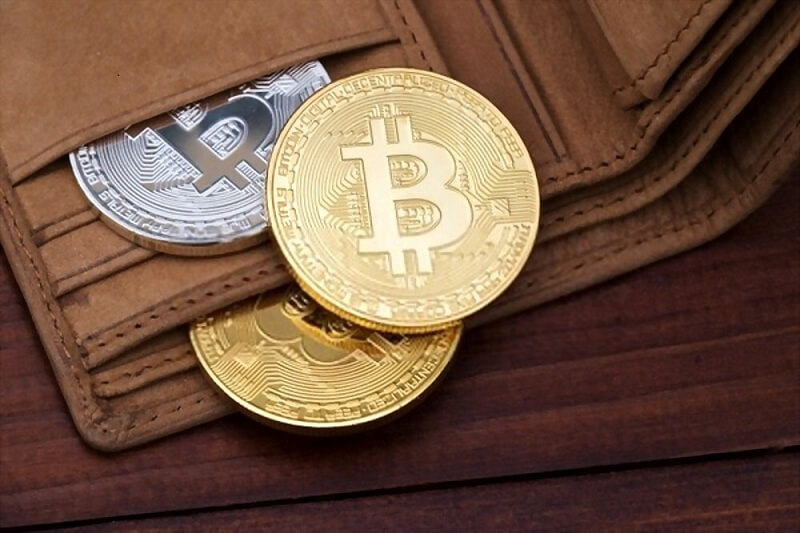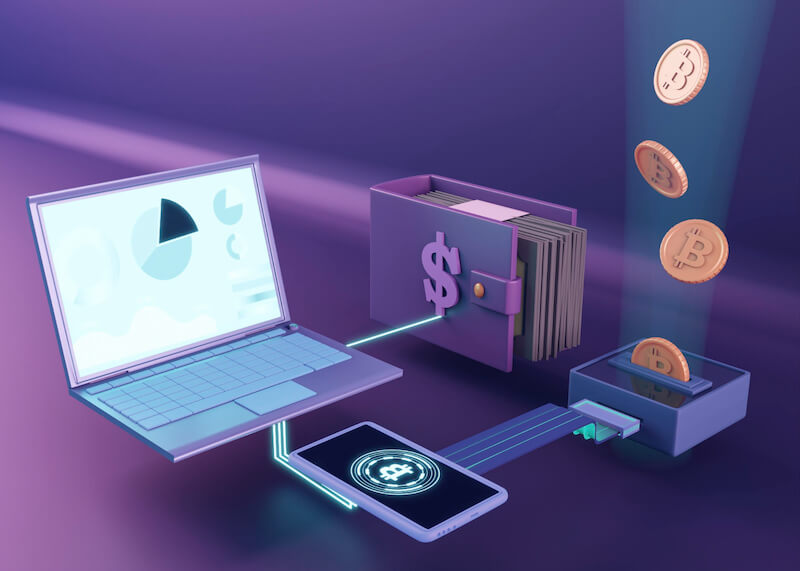How to store cryptocurrency safely: it’s the million-dollar question – quite literally, for many investors. A solid plan protects your digital wealth against hackers and missteps. Grasp the basics of crypto wallets and learn which type is a fortress for your funds. Next, I’ll guide you through the strongest vaults in the market, and how to set up defenses that even digital masterminds respect. Dive in as we fortify your wallet with layered security measures that even the most skilled thieves can’t crack. And because threats evolve, I’ll show you how to stay vigilant, keeping your assets as secure tomorrow as they are today. Get ready to turn your crypto storage into an impenetrable digital fortress.
Understanding Crypto Wallets: The Cornerstone of Digital Asset Security
Deciphering the Difference: Hot vs Cold Wallets
To keep your digital coins safe, you need to understand wallets. Think of a wallet as a safe that holds money. But for digital coins, wallets are much more than that. Some wallets are hot, and some are cold. So, what’s the big deal?
Hot wallets are like your everyday wallet. They connect to the internet, making it easy to spend your coins. Yet, they can be risky. Hackers love to steal from these wallets. But cold wallets are different. They are like vaults buried deep underground. They are offline, which means they are safe from internet thieves.
Why does this matter? Think about your house. You lock your door to stay safe, right? In the same way, you should lock your coins away in cold wallets. This way, your digital wealth is secure. Next time you hear ‘hot’ and ‘cold’ wallets, remember: one is like a pocket wallet, and the other like a hidden vault. The vault is what you want for keeping your coins safe.
The Best Cryptocurrency Wallets to Consider
When picking a wallet, be smart. Go for the best ones to keep your coins safe. There are lots of wallets out there, but which ones are tops? You’ve got hardware wallets, mobile wallets, desktop wallets, and more. Let’s talk about hardware wallets, as they’re quite strong in security.
Two good picks are the Ledger Nano S and the Trezor Model T. These wallets look like USB drives. Yet, they keep your coins safe like a fortress. The Ledger Nano S is like a smart safe. It’s small and sleek. It lets you get to your coins anytime but keeps them locked away from hackers.
The Trezor Model T is another excellent choice. It’s like having a high-tech guard for your coins. It shows you everything on a nice screen, so you know what’s going on. Plus, it helps block bad guys from getting in. Both of these wallets are like loyal guard dogs for your digital coins. They’re tough, loyal, and always on watch.
When you choose a wallet, think like a guard. How well can this wallet protect my coins? With hardware wallets like these, you’re putting up a strong defense. So, take your pick and lock those coins away. Then sleep easy, knowing your digital wealth is under heavy guard, safe and sound.
Setting Up Your Defense: Secure Storage Solutions
Navigating Hardware Wallet Features: Ledger Nano S and Trezor Model T
To keep your crypto safe, think of hardware wallets as your personal vaults. They are small devices that store your crypto offline, away from hackers. Picture a safe that only you have the key to – that’s a hardware wallet for you. Two popular options are the Ledger Nano S and the Trezor Model T. These wallets keep your digital coins away from online threats and prevent unauthorized access.
Both devices have screens, making transactions safe and visible. They support many coins, fitting different user needs. The Ledger Nano S connects to any computer via USB and has a secure chip to protect your assets. The Trezor Model T offers a touch screen for easy operation and has a USB-C connection. It also supports microSD cards for encrypted storage.
The Virtues of Cold Storage Benefits and Crypto Offline Storage
Why use cold storage for your cryptocurrency? The top benefit is security. Cold storage keeps your crypto offline, safe from online hacks. Think of it as putting your valuables in a bank vault instead of under your mattress. With offline wallets, your funds are not exposed to the risks of internet-connected servers.
Cold storage comes in various forms, like paper wallets, USB drives, or hardware wallets. Paper wallets are simple but must be kept safe from physical harm. USB drives can store your keys, but they must stay virus-free. Hardware wallets are the most secure form, with features designed for crypto protection. They’re built to resist tampering and can even be used safely on a computer that might be infected.
Securely setting up your hardware wallet is crucial. First, you initialize it yourself to generate a new private key. This key is what you protect with your life – it’s what keeps your crypto yours. The wallet will give you a seed phrase. Write it down and guard it; it’s your backup key to access your money if the device is lost or broken. Avoid common places like your desk or emails for storing this phrase. Instead, use a safe or a locked drawer.
Most hardware wallets work with apps to manage and track your assets. Keep these apps updated to avoid security holes. Regular updates ensure you’re protected against the latest threats and have the best features.
Remember, crypto security isn’t just about choosing the right wallet. It’s about how you use it. Always think twice before making a transaction and never share your private key or seed phrase with anyone. With the right storage solution, you’re taking a powerful step towards protecting your digital wealth.
Guarding Your Digital Keys: Advanced Security Practices
Mastering Multi-Signature Wallets and Private Key Protection
To keep your crypto safe, start with multi-signature wallets. These wallets need more than one key to open. Like a bank vault that needs two keys at once. Picture your digital wealth locked behind several doors, not one. Extra keys mean more protection. Each key is held by a different person or device. This cuts the risk of theft since stealing one key won’t do the job.
Private key protection is also key. Your private key is like your crypto’s DNA—it’s unique to you. If someone gets your private key, they get your crypto. Keep this key secret and safe. Write it down and store it somewhere no one can find it. Do not share it, as you wouldn’t give out the keys to your treasure chest.
Crafting Strong Password Strategies and Implementing Two-Factor Authentication
Next up: passwords. A strong password is hard to crack. Use a mix of letters, numbers, and symbols. Skip words or dates people can guess, like birthdays or pet names. Think more ‘X5#mL!9^’ and less ‘Fluffy123.’ And never use the same password twice.
Passwords alone are not enough. You need two-factor authentication (2FA) too. This adds another security step. Someone trying to get in will need your password and a second key. This second key could be a code sent to your phone or made by an app. It’s like having a secret handshake after using a key.
With these tips, you have a strong defense for your digital gold. Never forget: good security is about more than tech. It’s about being smart with your secrets. Keep them safe, and they’ll do the same for your crypto.
Maintaining Security Over Time: Ongoing Vigilance
Regular Hardware Wallet Updates and Backup Seed Phrases Management
To keep your digital wealth safe, updating your hardware wallet is key. Just like you keep your phone’s software up to date, you must update your wallet. Updates fix bugs and stop hackers. Always do this to avoid risk.
Backup seed phrases are another must. They’re a set of words you use if your wallet gets lost or breaks. Write these words down. Store them somewhere safe, not online. Test your backup yearly to make sure it works.
Always pair your updates and backups with a strong password. Use a mix of letters, numbers, and symbols. Change passwords often and never reuse them. This adds a strong layer to your defense.
Understanding Crypto Storage Legislation and Blockchain Security Basics
Know the laws! Crypto storage rules can change. Stay up to date to protect your assets. Visit official sites for the latest info. Keeping in line with the law is part of secure storage.
Learn the basics of blockchain security, too. Understand how transactions work. Learn what a blockchain really is. This knowledge is your foundation for secure crypto storage. The more you know, the better you can protect your crypto.
For example, using a multi-signature wallet adds extra security. This means several people must approve a transaction.
Remember, the world of crypto never sleeps. Keep your knowledge fresh. Review these tips often. Keep learning and stay vigilant. Your digital wealth depends on it.
In this post, we’ve covered the essentials of keeping your digital assets safe. We started by understanding the role of crypto wallets, noting the key contrast between hot and cold ones. We looked at top wallet choices for handling your cryptocurrency.
Next, we explored secure storage solutions, focusing on strong features in hardware wallets like the Ledger Nano S and Trezor Model T. We stressed why cold storage and its benefits are vital for your peace of mind.
Then, we dived into advanced security steps. Learning how to use multi-signature wallets and protect your private keys is crucial. We also can’t overlook strong passwords and two-factor authentication for extra safety.
Finally, security is an ongoing task. Keeping hardware wallets up to date and managing backup seed phrases is a must. Plus, getting to know crypto storage laws and the basics of blockchain security helps a lot.
Staying alert and informed is your best defense. With these tips, you’re now set to keep your crypto safe and sound. Remember, a little effort now saves a ton of trouble later!
Q&A :
How do I keep my cryptocurrency secure?
Storing cryptocurrency safely is a multifaceted task that involves understanding and utilizing secure storage options. Cryptocurrency can be stored in digital wallets, which come in different forms like hot wallets (online, software-based) and cold wallets (offline, such as hardware or paper wallets). Using a reputable wallet provider, enabling two-factor authentication, and keeping your private keys offline in a secure place are fundamental security measures.
What are the safest ways to store cryptocurrency?
The safest ways to store cryptocurrency generally involve cold storage solutions. Hardware wallets are dedicated devices designed to keep your crypto secure offline. Paper wallets involve printing out your public and private keys and storing them safely, although they’re less user-friendly. Safety deposit boxes can also be used for added security. It’s crucial to consider encryption and physical security to safeguard your assets from both digital and physical threats.
Can cryptos be stored without the risk of hacking?
While no method is entirely risk-free, storing cryptocurrencies in cold storage significantly reduces the chances of them being hacked. Hardware wallets, for instance, are designed with security in mind and are considered one of the most secure options since they store the private keys offline. Regularly updating software, using strong and unique passwords, and being vigilant against phishing are also key strategies to minimize risks.
What should I do if I lose access to my cryptocurrency wallet?
If you lose access to your cryptocurrency wallet, the first step is to try and recover it using a backup phrase or seed phrase, usually created during the setup of the wallet. If that fails, you might need to contact customer support of your wallet provider for further assistance. It’s important to act promptly and cautiously, as lost access can be a significant issue given the decentralized nature of cryptocurrencies.
Is it necessary to use multiple cryptocurrency wallets for storage?
Using multiple cryptocurrency wallets can be a strategic way to manage risk. By diversifying your storage options across various wallets (e.g., mobile, desktop, hardware), you create redundancy and mitigate the impact of a single point of failure. However, it’s essential to manage and maintain each wallet’s security, as the complexity of handling multiples can also increase potential vulnerabilities.






